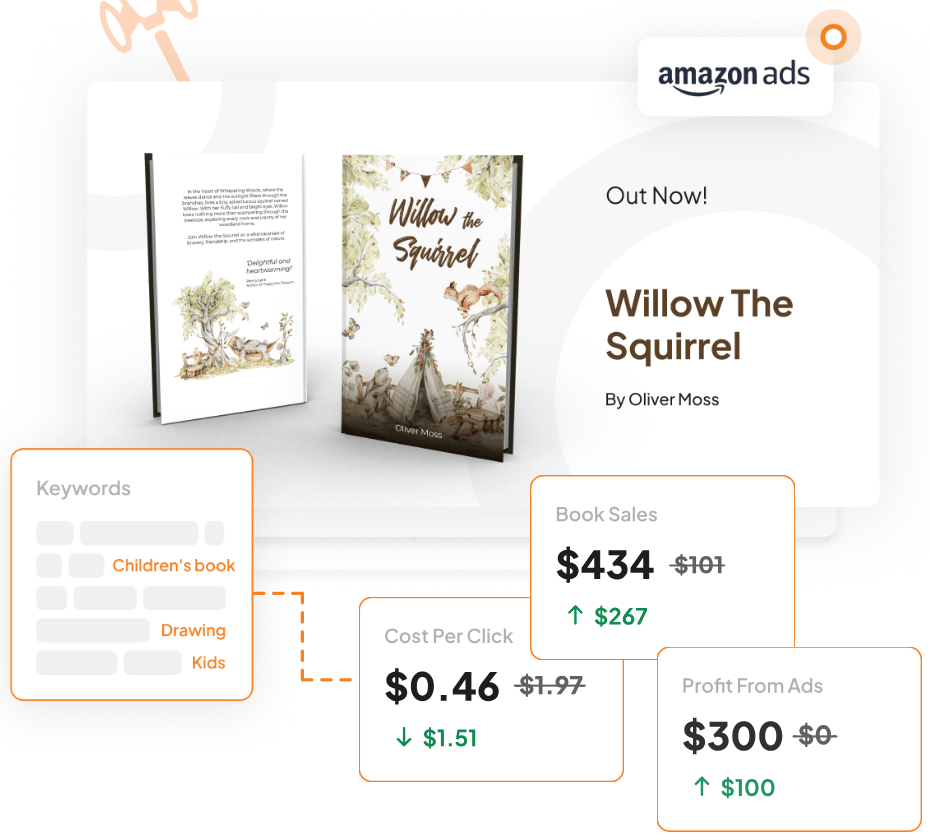Have you ever gazed at the spine of a book and thought, “That could be my name there”? The dream of becoming a published author often feels like an elusive mirage, tantalizingly close yet always out of reach.
But here’s the truth: it doesn’t have to be. With the right steps and a touch of perseverance, you can transform that dream into reality. So, are you ready to embark on this literary journey? Let’s dive into the five essential actions you need to take today, no excuses!
Understanding the Journey to Becoming a Published Author
The path to becoming a published author is akin to navigating a winding road filled with unexpected turns and breathtaking vistas.
It’s not just about putting pen to paper; it’s about discovering your unique voice and connecting with readers who crave your story. This journey demands dedication, resilience, and a sprinkle of audacity.
The Importance of Writing Regularly
Imagine your writing as a muscle. The more you use it, the stronger it becomes. Writing regularly is not just a suggestion—it’s a necessity.
It hones your skills, refines your style, and, most importantly, builds the discipline needed to complete a manuscript. Whether it’s a journal entry, a blog post, or the next chapter of your novel, make writing a non-negotiable part of your daily routine.
Start small if you’re overwhelmed by the idea of writing every day. Dedicate just 10 minutes daily to jot down thoughts or ideas. Over time, you’ll find that this small habit grows into a robust writing practice that fuels your creative process.
Finding Your Unique Voice
Your voice is your fingerprint in the literary world—utterly unique and unmistakably yours. Finding it requires introspection and experimentation.
Dive into different genres, experiment with diverse writing styles, and most importantly, write from the heart. Your authentic voice will not only set you apart but also resonate deeply with readers.
Remember, your voice is not static; it evolves with each word you write and every story you tell. Embrace this evolution, and let your voice guide you to the stories only you can tell.
5 Essential Actions to Kickstart Your Author Career
Now that we’ve set the stage, it’s time to delve into the actionable steps that will propel you toward becoming a published author. These five actions are your roadmap to success, each one bringing you closer to seeing your name in print.

Action 1: Write Daily and Develop Your Craft
Consistency is the bedrock of writing success. By committing to a daily writing practice, you cultivate a habit that strengthens your craft.
Use this time to explore new ideas, develop characters, and immerse yourself in storytelling. Remember, perfection is not the goal; progress is. Allow yourself the freedom to write imperfectly, knowing that revision is where the magic happens.
Set a specific time and place for your writing sessions to create a routine. Whether it’s early morning or late at night, find a slot that works for you and stick to it. Consistency breeds creativity.
Action 2: Join a Writing Community for Support
Writing is often seen as a solitary pursuit, but it doesn’t have to be. Joining a writing community provides invaluable support, feedback, and motivation.
Whether online or in-person, these communities offer a safe space to share your work, gain insights, and connect with fellow writers who understand the highs and lows of the writing journey.
Consider platforms like Medium or Wattpad, where you can publish your stories and engage with a broader audience. The feedback and camaraderie you find here can be instrumental in refining your work and boosting your confidence.
No marketing platform? No social following? No problem!
Publisher Rocket helps you market your debut novel like a pro.
It’s a gamechanger for debut authors – try it today!


Action 3: Build Your Author Platform Online
In today’s digital age, an online presence is crucial for authors. Your author platform is your personal brand, encompassing your website, social media profiles, and any other online touchpoints.
Use these platforms to connect with readers, share your writing journey, and showcase your work. A strong online presence not only attracts readers but also demonstrates your professionalism to potential publishers.
Start by creating a simple author website where you can host a blog, share updates, and provide contact information. Use social media strategically to engage with your audience and share snippets of your work.
Action 4: Research Publishing Options
The publishing landscape is vast and varied, offering multiple paths to see your work in print.
From traditional publishing houses to self-publishing platforms, each option has its pros and cons. Take the time to research and understand these options, considering factors like creative control, royalties, and distribution.
| Publishing Option | Pros | Cons |
|---|---|---|
| Traditional Publishing | Professional editing, marketing support, prestige | Less creative control, lower royalties |
| Self-Publishing | Full creative control, higher royalties | More responsibility, initial costs |
Action 5: Embrace Feedback and Revise Your Work
Feedback is a writer’s best friend, offering fresh perspectives and highlighting areas for improvement.
Embrace constructive criticism and use it to refine your manuscript. Remember, revision is where good writing becomes great writing. Be willing to cut, rewrite, and polish until your work shines.
Seek feedback from a diverse group of readers, including fellow writers, friends, and professionals. Each perspective will provide unique insights that can enhance your work.

Navigating the Publishing Landscape
The world of publishing is as dynamic as it is daunting, offering a myriad of paths to aspiring authors. Understanding the landscape is key to making informed decisions that align with your goals and aspirations.
Traditional vs. Self-Publishing: Pros and Cons
Choosing between traditional and self-publishing is one of the most significant decisions you’ll make on your journey.
Traditional publishing offers the allure of industry recognition and support, while self-publishing provides autonomy and potentially higher earnings. Weigh the pros and cons carefully to determine which path suits your vision.
Remember, there’s no one-size-fits-all answer. Some authors thrive under the guidance of a traditional publisher, while others revel in the freedom of self-publishing. Consider your priorities and make the choice that’s right for you.
Understanding Your Audience and Market
Knowing your audience is crucial for any author. Understanding their preferences, reading habits, and pain points allows you to tailor your work to meet their needs.
Conduct market research, engage with your readers, and stay abreast of industry trends to ensure your work resonates with its intended audience.
As you develop your author platform, use analytics tools to gain insights into your audience’s demographics and interests. This data will inform your marketing strategies and help you build a loyal readership.
Feeling lost with your debut novel?
Fiverr Pro connects you with expert editors, designers, and marketers – everything you need to get your book ready for success!

Marketing Your Work Effectively
Marketing is an integral part of the publishing process, transforming your manuscript from a private endeavor into a public success. An effective marketing strategy amplifies your reach, engages your audience, and drives sales.
Building a Marketing Strategy that Works
A robust marketing strategy encompasses various elements, from social media campaigns to email newsletters. Start by defining your goals and identifying your target audience. Then, craft a plan that leverages your strengths and resources to reach your objectives.
- Utilize social media to share updates, engage with readers, and promote your book.
- Consider hosting virtual events, such as webinars or live readings, to connect with your audience.
- Collaborate with other authors or influencers to expand your reach.

Utilizing Social Media and Online Platforms
Social media is a powerful tool for authors, offering a direct line to readers and potential fans. Choose platforms that align with your audience and content style, and use them consistently to share your journey, interact with followers, and promote your work.
Platforms like Instagram, Twitter, and TikTok are particularly effective for building a visual brand and engaging with a younger audience. Meanwhile, LinkedIn and Facebook provide opportunities to connect with professional networks and established reader communities.
Inspiring Success Stories of Self-Published Authors
Success leaves clues, and the stories of self-published authors who have made it big are both inspiring and instructive. These tales of triumph demonstrate that with determination and strategic action, anything is possible.
Case Study: Amanda Hocking’s Breakthrough
Amanda Hocking’s rise to fame is a testament to the power of perseverance. After facing numerous rejections, she self-published her paranormal romance novels on Amazon.
Her books resonated with readers, quickly gaining traction and selling millions of copies. Hocking’s success eventually led to a traditional publishing deal, but her journey began with the bold decision to take control of her destiny.
Google Docs is for notes. Scrivener is for novels. Upgrade your writing game and try it for free today!

Case Study: Hugh Howey’s Wool Phenomenon
Hugh Howey’s “Wool” series is a shining example of self-publishing success. Initially released as a short story on Amazon, “Wool” captivated readers with its gripping narrative and immersive world.
The series’ popularity skyrocketed, leading to a lucrative publishing deal and a film adaptation. Howey’s story illustrates the potential of self-publishing to launch a career and reach a global audience.
Case Study: Andy Weir and The Martian
Andy Weir’s journey from software engineer to bestselling author is nothing short of remarkable. “The Martian” began as a serialized story on Weir’s blog, capturing the imagination of science fiction enthusiasts.
After self-publishing the novel, it gained widespread acclaim, leading to a major publishing deal and a blockbuster film starring Matt Damon. Weir’s story underscores the importance of passion and persistence in achieving literary success.

Staying Motivated on Your Writing Journey
The road to publication is fraught with challenges, but maintaining motivation is key to overcoming them. By setting realistic goals and finding inspiration in everyday life, you can keep your creative flame burning bright.
Setting Realistic Goals and Expectations
Goal setting is an essential part of any writing journey. Establish clear, achievable objectives that guide your progress and keep you focused. Remember, success doesn’t happen overnight. Celebrate small victories along the way and remain patient as you work toward your ultimate goal.
Break down your larger goals into manageable tasks. For example, aim to complete a certain number of pages or chapters each week. This approach prevents overwhelm and keeps you moving forward steadily.
Finding Writing Motivation in Everyday Life
Inspiration is all around us, waiting to be discovered in the mundane and the extraordinary.
Find motivation in the world around you, whether it’s a conversation with a stranger, a walk in nature, or a cherished memory. Let these moments fuel your creativity and infuse your writing with authenticity.
Keep a journal to capture fleeting ideas and reflections. These snippets can serve as seeds for future stories, ensuring that inspiration is never far away.
Wrapping Up Your Author Aspirations
As we conclude this guide, remember that the journey to becoming a published author is a personal and transformative one. With dedication, courage, and a willingness to learn, you can turn your aspirations into achievements.
Taking the First Steps Today
The first step is always the hardest, but it’s also the most crucial. Commit to your writing goals and take action today. Whether it’s drafting a new chapter, joining a writing group, or researching publishing options, every step brings you closer to your dream.
Creating a Long-Term Writing Plan
A long-term writing plan provides direction and purpose, helping you navigate the ups and downs of the creative process.
Outline your goals, set deadlines, and track your progress to stay on course. Remember, the journey is as important as the destination, so savor each moment and embrace the learning experiences along the way.








